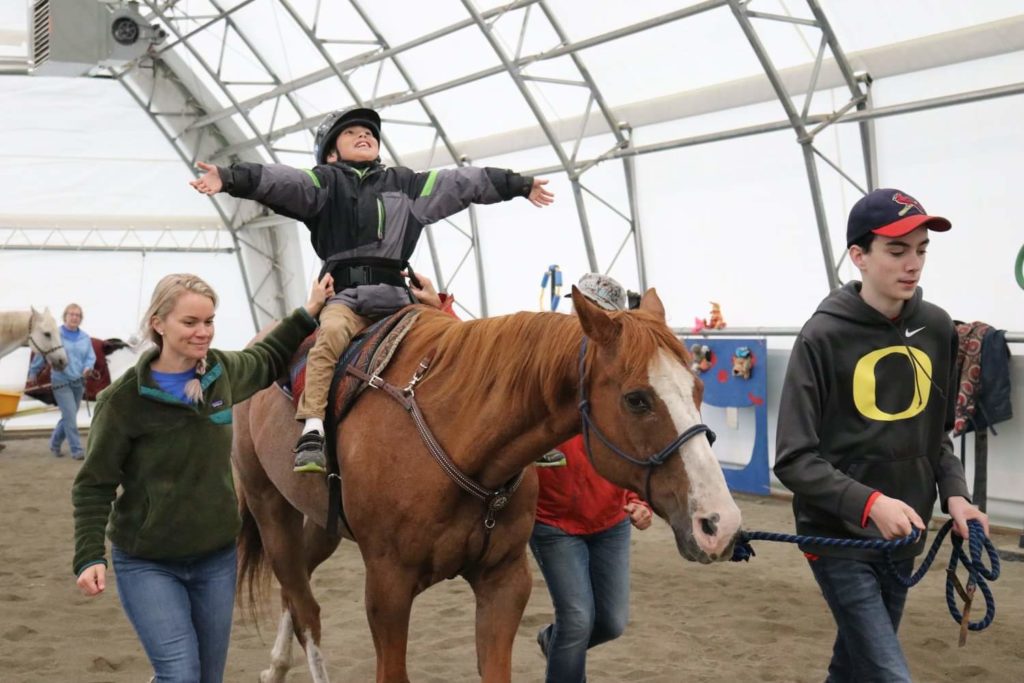
Therapeutic Riding occurs in one hour long lessons with 1-4 riders, grouped based on similar cognitive or physical ability, age, and/or therapeutic goals. Lessons aim to teach riding skills and, eventually, provide the rider with the skills and experience necessary to become independent rider. Therapeutic benefits include an increase in muscle tone, strength, self-esteem, improvements in coordination and balance, social interaction and communication, and development of a sense of control.
Class activities include learning riding skills, trail rides, and group activities such as competitive games. Students also expand their horsemanship skills by learning how to help groom and tack their horses (as appropriate). The increased attention, concentration, learning, and verbal skills that are inherent in learning to ride successfully lead to a magical bond with the horse, leading to improved social skills, such as making new friends, and gaining an appreciation for authority.
How Therapeutic Riding Works
The horse’s soothing rhythm, warmth and three-dimensional movement pattern provides healthy exercise while improving circulation and muscle tone. The discipline associated with working with horses and the social interactions between peers benefit the mind and spirit while raising self-esteem and increasing self-sufficiency through accomplishment. The bond between the rider and the horse reduces anxiety, promoted verbal and physical interactions, and offers a haven for participant empowerment.
 Mailing Address: PO Box 240663
Mailing Address: PO Box 240663 
